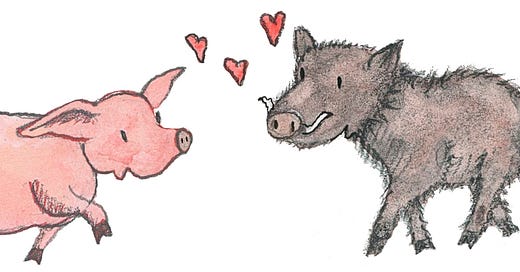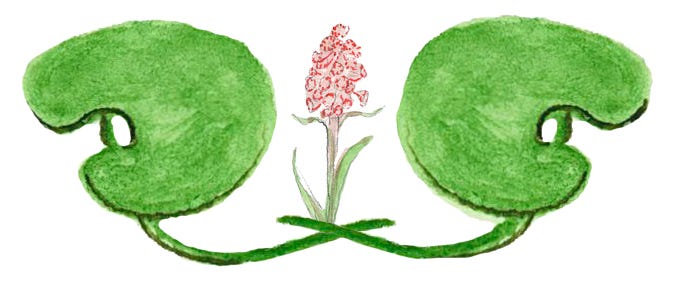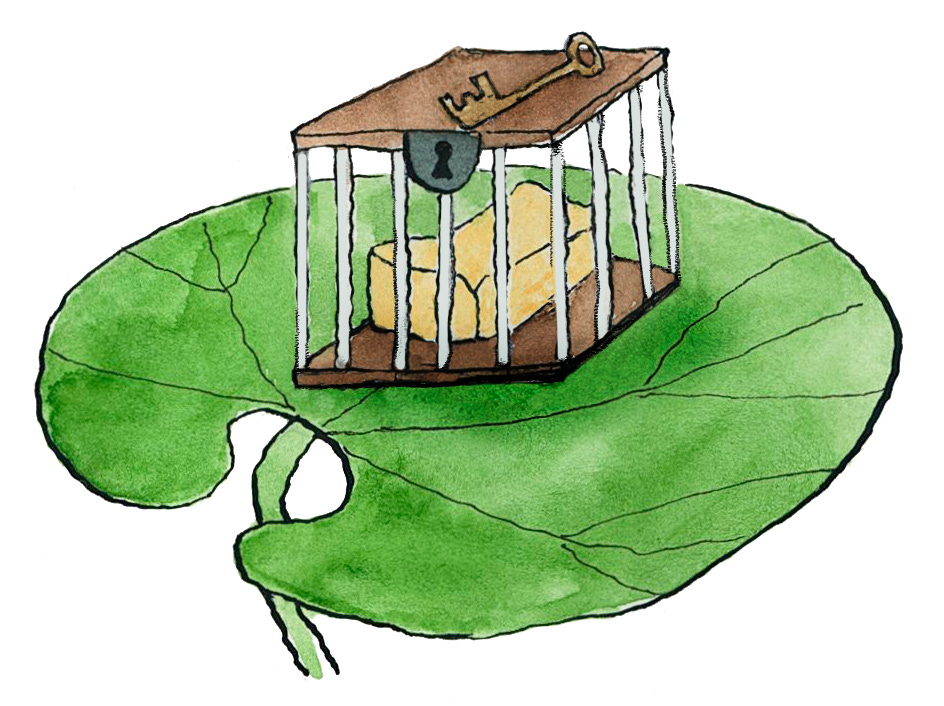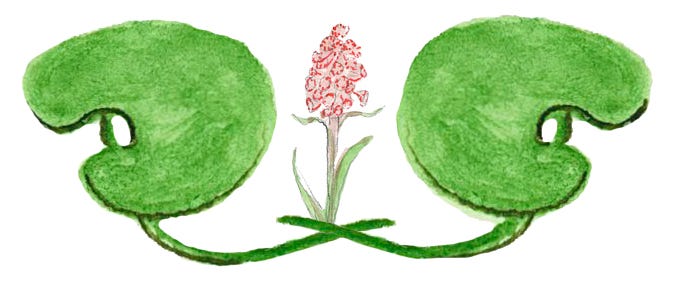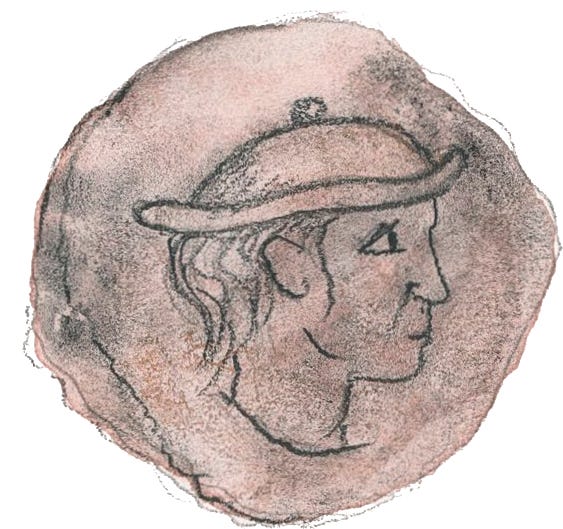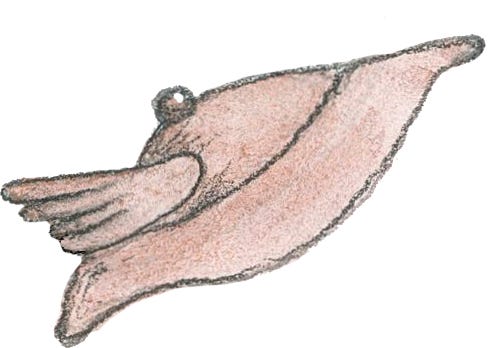Petasites Hybridis has many names: Blatterdock, Bog Rhubarb, Bogshorns, Butcher's Rhubarb, Butterbur Coltsfoot, Butterdock, Butterfly Dock, Capdockin, Coughwort, Devil's Hat, European Pestroot, Exwort, Flapper-bags, Flapperdock, Fuki, Horsehoof, Hybrid Butterbur, Monk's Rhubarb, Paddy's Rhubarb, Pestilence Wort, Plaguewort, Purple Butterbur, Sweet Coltsfoot, Umbrella Leaves, Umbrella Plant, Western Coltsfoot, Wild Rhubarb… to name but a few.
The majority of those names refer to the enormous leaves or their hoof-like shape, for example ‘Horsehoof’ or ‘Western Coltsfoot’. This is also used in other European languages, like Dutch, Groot Hoefblad. But the one that’s most used, is Butterbur.
Butterbur was used to wrap around butter to preserve it and keep it cool. The word bur in English means prickly or sticky seed. However, butterbur doesn’t have any prickly or sticky seeds, so we need to look a bit further to understand the full name. And it gets us back to the vikings, who used the word bur for ‘cage’, ‘coop’ or ‘hutch’. Making butterbur something to keep butter safe or fresh, which would have been useful for Vikings on long journeys at sea.
Butterbur was used for many things, from butter wrap to loo roll to umbrella and parasol. You just don’t want to mix up your butter wrap with your loo roll.
Other relatively common names were Plague wort, Pestilence wort and Pestroot. These were also names often used in other Northern European languages, e.g. ‘Pestrot’ in Swedish and ‘Pestwurz’ in German. Plague wort, was used to give sufferers from Bubonic Plague some relief. Wrapping them in the giant leaves helped sooth and cool them from the fevers and pains caused by the inflamed buboes.
It was also burned in the houses of plague sufferers, to fumigate the house.
Another theory why the plant has names like plague wort, is that people claimed it grew on the graves of plague victims.
If you got Bubonic Plague, (or Black Death) before the mid 20th century, your chances of survival were slim. It was a gruesome way to go. First, buboes (inflamed lymph nodes) would appear in your thighs, neck, groin or armpits, followed by a high fever, crippling tummy cramps and dreadful diarrhoea. Then you'd vomit blood and bleed from your nose, your bum and under your skin. The last stage was gangrene, where your skin would rot and turned black. Luckily, since 1947 we have treatments available in the form of four different antibiotics: streptomycin, gentamicin, doxycycline, and ciprofloxacin. Phew!
The scientific name Petasites Hybridis comes from Ancient Greek, petasos. A Petasos is a flat, broad brimmed hat worn by Greek farmers, hunters and travellers. You can still see examples of petasos on ancient coins, as for example the one below, which is a copy of an almost 2,500 year old coin.
As a hat of travellers the petasos became a symbol of Hermes, the Greek God of travel and deliverer of messages. Hermes used to wear a petasos with wings on its side.
Ancient Romans mated domesticated sows with wild boar. Not sure why, but the practice was common enough to have its own word: ‘hybridus’. Later it was used to mean ‘bastard’. Now it means the offspring of any two different species.
This newsletter is NOT a field guide for flower identification. It’s often difficult to tell the difference between harmless plants and poisonous plants and some flowers are rare and protected by law, so, NEVER pick or use any plants or flowers if you’re not sure about them.
illustrations and text ©Chantal Bourgonje


